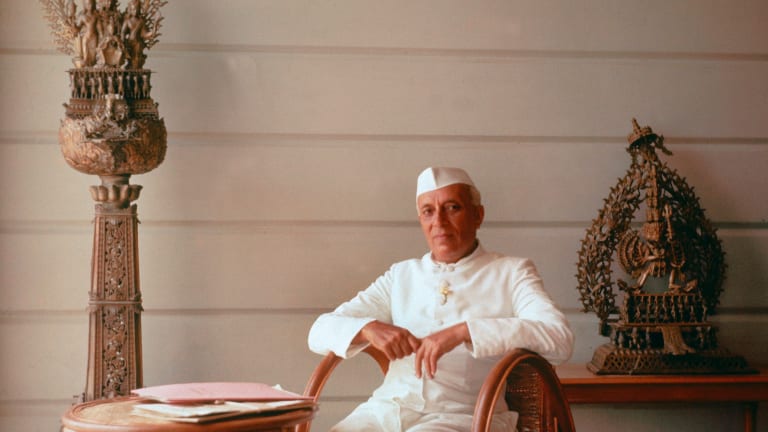Frontlist | New book on how former PM rebuilt Indian army after 1962 war
Frontlist | New book on how former PM rebuilt Indian army after 1962 waron Nov 30, 2020

Contrary to the current perception built by a section hostile to Jawaharlal Nehru, the country’s first prime minister had “worked himself to death” to restore and rebuild the Indian defence forces after the 1962 Indo-Chinese conflict.
Octogenarian Prem Prakash, chairman of the Asian News international [ANI], in his memoirs, ‘Reporting India – My Seventy Year Journey As A Journalist’ [Penguin Random House India] states, “It is my belief that in the twenty months that he lived after October 1962, Nehru did a great deal to restore the defence capability and strengthen the Indian Army. He felt personally responsible for its earlier decline and needed to reclaim the confidence of Indians people.”
In Prakash’s assessment, Nehru had ignored the modernisation of Indian armed forces, believing firmly in his political theory that following the horrors of World War II no nation may use war to solve international differences. That ideology lay in tatters when China attacked Indian borders and ill-equipped Indian army could hardly match them.
Prakash had watched the fall of North-East Frontier Agency (NEFA), the unilateral ceasefire by the Chinese first hand covering 1962 conflict for Reuters. He along with George Veghese had met Nehru in Tezpur and told him that the move to vacate north bank of river Brahamputra in Assam by the Indian army was one of panic.
Post conflict, Nehru was a broken man, observes Prakash, and it took a heavy toll on the prime minister’s health. “I watched him rebuild the Indian army which he had once, naively neglected. Emergency commissions were announced to recruit officers and train them in six months for the job as the army was being expanded. Whether he had to beg or borrow, the Prime Minister was determined to acquire the armaments he needed from around the world. Nehru worked day in, day out, and I, on my many visits to the PM’s residence, would find him working late at night clearing all kinds of bureaucratic files.”
To Prakash’s astonishment, Nehru even compromised on his pet theme of Non-Alignment policy vis-à-vis the United States when he asked for an American aerial umbrella, as he perhaps felt that the Indian Air force, with its limited power, was not capable of defending our skies against the Chinese. “United States Air Force planes arrived in India. This was strange. Here, we were, a country still refusing to join on the side of the Americans in the cold war, yet forced to compromise because of the Chinese threat,” wrote Prakash who had developed a habit of maintaining notes and diaries since the beginning.
He said he could not help noticing that after the 1962 debacle, a section of the ruling Congress bayed for his blood, the people of India i.e. ordinary citizens did not join any protest. “There was no mass agitation against Nehru as a consequence of the defeat of the Indian Army,” wrote Prakash who holds a distinction of sorts in personally interacting with all 14 prime ministers of India from Nehru to Narendra Modi.
John F Kennedy was assassinated on November 22, 1963. The same day, several senior Indian Army Generals – Maj General Nanavati, Lt General Bikram Singh, Lt General Daulat Singh and others – were killed in a helicopter crash. It remained a mystery why so many top ranking generals were traveling together and Nehru was taken aback with this loss.
Both the events had a profound impact on Nehru because he was very fond of the Kennedy family. John F Kennedy had assured Nehru of full support of the United States. Kennedy was also keen on building relations with the Soviet Union, a country Nehru liked and admired.
When Prakash visited Teen Murti Bhawan, he requested the prime minister to speak to him about Kennedy assassination before 7 pm that day. Nehru was meeting the then Lok Sabha speaker Sardar Hukum Singh. Seeing the camera installed, Hukum Singh sought early leave but Nehru, a stickler for protocol, completed his engagement, went out to see him off and then returned to give his reaction. He finished the statement in two and a half minutes.
“As Pandit ji was leaving, he turned back and asked, “Prem Prakash Yeh Saat Baje Ka Hukum Kya? “[ what was this order for the 7 pm interview?] I explained to the PM that I had to get back to the office, write the dope-sheet to explain the pictures, rush to the airport and place the news film package in a BOAC flight to London at 10 pm that night. If the package did not catch the flight all effort would go waste. Pandit ji appreciated that and moved on towards his office.”
Prakash’s account is immensely readable and sprinkled with anecdotes. He loved the way Nehru used to play Holi in the prime minister’s house. “Every year, crowds would gather on the front lawn of Teen Murti House on the occasion of Holi. Pandit ji used to mix freely and play with colour. It was great to see him drenched in colours and enjoying the fun. Pandit ji would then visit the homes of some of his cabinet colleagues to join in the festivities there.”
Prakash’s long professional journey began in 1952 when he had sailed from Bombay on board MV Neptunia to Milan onwards to Switzerland and Great Britain. At one of the ports of call, Aden, he found India’s reputation to be very high. Indian rupee was the currency welcomed by the traders. None of them were interested in the Pound sterling or the US dollar. India’s rupee was the ruling currency.



.jpg)






.jpg)

.jpg)
.jpg)
.jpg)
.jpg)
.jpg)
.jpg)










Sorry! No comment found for this post.